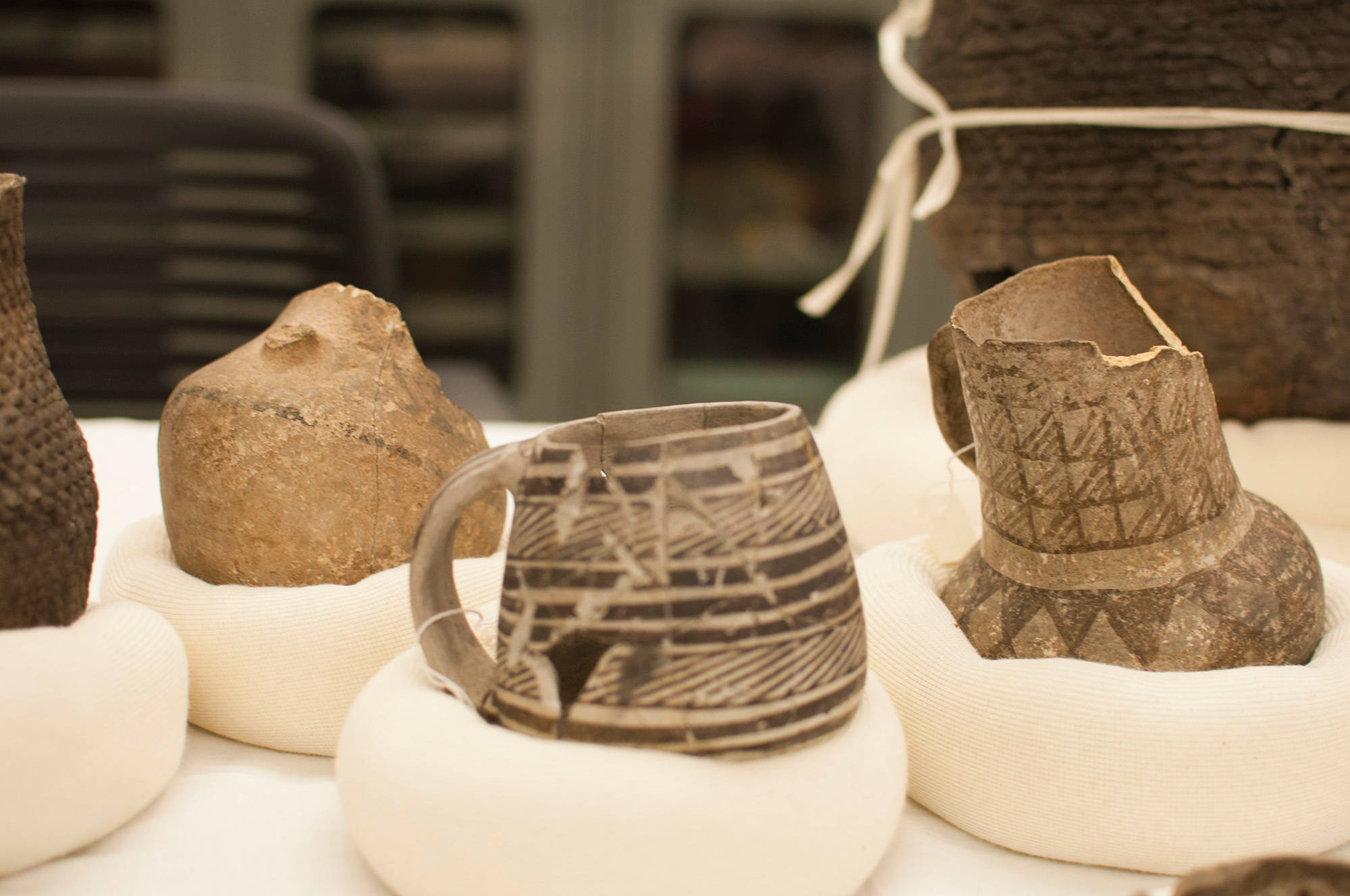
10 Secrets from the Natural History Museum
When the Natural History Museum Bares All
Once a year, you can go behind the scenes to see what prehistoric treasures scientists are working with and discover Utah’s secrets.
Eric Rickart (A.K.A Dr. Rattus Rattus) has a bat named after him and preserves small rodents taxidermy style (he’ll show you how he does it); geneticist explorers at the museum, discovered a native strain of potato here in Utah, and are working towards reintroducing it; Duncan Metcalfe leads research groups in the Range Creek archeology lab learning all about Fremont peoples, history, and culture; Christy Bills is tracking local fireflies (yes, we have fireflies!); and Ann Lawlor studies Native American basketry and is learning to make them herself (she’ll show you the ways); and this place was a dinosaur haven, and now NHMU is the state repository for all the fossils you can handle.
In short, what you’ll see behind the scenes is mind-blowing, and you’ll want to re-enroll for a sciency degree because what the heck are you doing in that cubicle/office/desk/soul-sucking-paperwork job?
TOP 10 THINGS YOU’LL SEE BEHIND THE SCENES
10. Jacque Wolfe’s Insect Collections
Moths, mosquitos, butterflies, etc.
Back in the mid-twentieth century Wolfe meticulously collected and labeled local species that are on display for you to see up close and personal. Ask the entomologists anything. Anything.
9. Ornithological Specimens
Owls, ptarmigans, and all the locals.
The feathers are what’s amazing. Owls with noiseless feathers so they can sneak up on their prey. Ptarmigans have feathers on their feet. And the labels! The labels are pretty in and of themselves—handwritten in gorgeous penmanship.
8. Range Creek Artifacts—Fremont History & Culture
Pottery fragments, corn cobs, and clothing.
How was it all preserved over hundreds of years? You can thank the rats for that—their urine acted as glue to keep everything nice and preserved. Finally, rats aren’t just known for their plagues and wiping out human populations.
7. Reptiles in Jars
This is not food storage.
How else do you preserve cold-blooded snakes, frogs, and lizards? Wouldn’t you put them in jars and stack them up in a giant closet?
6. Eric Rickart & His Rats | Rigamodis
Sawdust to sawdust.
First you freeze the rodents. Then take linear measurements of the specimen. Next, you make an incision where there’s a cavity between the skin and the body—cutting through the bone (because you’re not saving the skeleton—just the skull). Stuff it full of good sawdust—it has to be good. Then stitch it up. Easy.
5. Herbarium
Ceanothus fendleri, erigonum, solidago sparsiflora, etc.
Every plant in this state has a use for both wildlife and humans—subsistence, medicinal, spiritual, and, yes, even geological. 135,000 specimens represent Utah’s plant biodiversity. You’ll learn about yarrow millefolium, ephedra vividis (“Mormon Tea”) and all the droubt adaptive plants that thrive in the desert.
4. Gems & Minerals
Fluorite, dioptase, azurite, etc.
The prettiest, shiniest, trilobite-iest rocks you’ll ever lay eyes on. Shelves and shelves and shelves of them. It’s like you’ve found Ali Baba’s treasure and the experts know all the things about local rocks and rocks from around the world. Rocks, rocks, rocks. From calcite to kyanite to trilobites to amethyst to zeolite to name-your-favorite and they’ve got it.
3. Native American Artifacts
Baskets, art, turqoise, history, pottery.
Ute, Paiute, Fremont and many other artifacts are on display. See basketry and textiles up close. Handle pottery fragments with guidance from a scientist. You’ll see turquoise that is now extinct. Yes, different strains of turquoise can go extinct. Those trace minerals are ever evolving.
2. Dinosaur Fossils
Cretaceous, Triassic, Permian...
You can see giant vertebrae—the M3-M6 of an Apatosaurus. Then there’s the turtles who are now extinct in North America. Oh, and the halotypes—the first fossil of its kind found. You can see trees before they had bark—lapita Dendron—skin before bark. Say what?! And more and lots and more dinosaur fossils.
1. Scientists
A rare breed indeed. They are stored in the depths of the museum, and they come out to talk to you, your kiddos, and your “I wish I were a scientist self.” Their research keeps them behind the scenes, but they are the lifeblood of the museum. You get to talk with them face-to-face and they’ll teach you about things happening right under your nose.